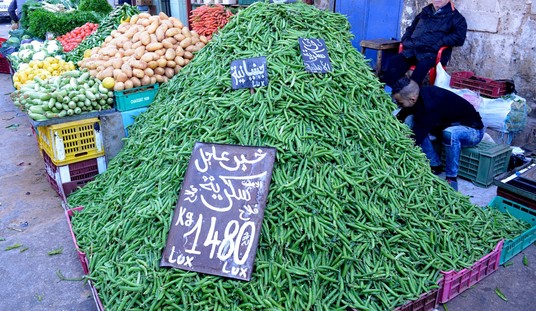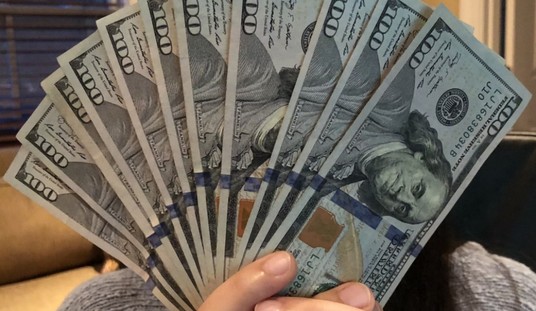The left is running out of things to politicize so now they’re politicizing restaurant food. In a meandering column for the left wing blog The Baffler Nikkitha Bakshani ascribes so many political implications to the restaurant fare described as “New American” that the term is as overladen as a Philly cheesesteak heaped with wasabi-ginger jicama slaw, sriracha misted arugula, and artisanal Nepalese yak-milk cheese.
Basically, she is arguing at great length that something that amounts to little more than a Yelp category is laden with racism and xenophobia. It is one of the most hilariously pretentious piles of nonsense I’ve come across lately, and in 2016 that’s saying something. The only thing that could make it more ludicrous is having it dramatically read by Keith Olbermann.
Here’s how “New American” cuisine is summarized.
The term can be summed up as popular American food influenced by the techniques and flavors of foreign cuisines, many of which were brought over by middle and working class immigrants. Exclusion may be its hallmark. As writer and food blogger Michael Procopio told Bill Daley in the Chicago Tribune in 2015: “It’s not Chinese, though there might be a dumpling on the menu; not Korean, but what’s with the kimchee slaw under the loup de mer? And it’s not a steakhouse, though the menu carries a steak and a fussed-over gourmet burger.”
Okay, fine. This describes bazillions of restaurants in the U.S. from fast food to five star. So naturally there must be some kind of sinister white people’s politics behind the term.
In an August Washington City Paper article, Eric Ziebold, a chef at New American restaurant Kinship, insists that the cuisine honors America’s legacy as a melting pot, by invoking seemingly unrelated news: “Contrary to what’s been going on in our country . . . with the police getting assaulted and the Black Lives Matter movement, the reality is that everybody in America is supposed to be created equal—that doesn’t exist everywhere in the world,” he says. “It’s that openness to culture, that openness to ideas that really makes a modern American restaurant today—the ability to embrace influence from other places.”
When someone starts singing Kumbaya about a plate of restaurant food in a newspaper puff piece, it doesn’t warrant political analysis, but you’re going to get political analysis, you racist.
The idea that America is exceptional for its multiculturalism is flattering, but ignores the fact that restaurants all over the world, from Sweden to Peru to Myanmar, do the same. Putting berbere sauce on a menu is not the same as embracing Somali people—many of whom will qualify for “extreme vetting” if Donald Trump institutes the policies he stumped on.
America ain’t all that, chef, if she were she’d open her borders to terrorists and not just their sauces.
At the end of the day, the label’s charm stems from the fact Americans are willing to pay more for a dinner that has the word “American” tacked on it than, say, Thai or Ethiopian food. Zagat data from 2015 shows that the average price of a Thai meal in a Zagat-rated restaurant is $32.50, while the average price of an American meal is almost double, at $63.92.
Maybe—just maybe—the people running Thai or Ethiopian restaurants aren’t as prone to price gouging. And maybe social climbers trying to impress each other are just more willing to pay ridiculously inflated prices for the perceived status, regardless of what word is “tacked on.”
However, the same Zagat survey shows Japanese as the cuisine Americans spend the most amount of money on per meal ($68.94), which indicates that the social class of the immigrant—Japanese immigrants to America tend to be wealthier than Thai immigrants—is key.
No, that just indicates that people like Sushi even though it is often as expensive as having gallbladder surgery.
The article continues making ridiculous non-sequiturs about how Americans decide what they are willing to pay for an ethnic meal based upon how rich and militarily powerful its country of origin is. Trying to achieve consensus on where to eat is already an ordeal on par with applying for a mortgage. No sane person is bringing geopolitical considerations into the conversation. If you ask ,”Where should we go to eat?” and the resulting discussion involves the proceedings of the latest International Monetary Fund and World Bank Group meeting, you should should go home, eat a PB&J in front of the TV, and resolve to find new friends.
The term New American encourages the ethnocentric idea that American food, or food from other rich countries like Denmark or Japan, is more complex, more worthy of our money and scrupulous tasting notes, than food from developing countries, so we need to fuse them with American foods to elevate their status. It is unfair to lump together Thai or Indian and Pakistani food as “ethnic,” while celebrating both the variety and nuance of New American food.
What do we want?
SCRUPULOUS TASTING NOTE JUSTICE!
When do we want it?
WE DON’T KNOW. MAYBE 8:30ISH? CALL MY ASSISTANT.
The post culminates in the hottest of hot takes (about hot takeout).
Anti-immigrant sentiment is high, and when we say immigrant influence on our food is “new”—when it is certainly not—it incentivizes xenophobic Americans to wail about yet another way immigrants have taken over. That’s the reason behind “Latinos for Trump” leader Marco Gutierrez’s warning that unchecked Mexican immigration will result in a taco truck in every corner. Liberal media made jokes and memes, but our election results show that perhaps many Americans did see this as a genuine threat.
The writer probably doesn’t realize that Gutierrez’s taco truck comment was roundly lampooned by people across the political spectrum. It was dumb. Probably almost as dumb as the assertion for which she’s using it as evidence.
I’ve met plenty of Americans with strong feelings about illegal immigration. I’ve met a scarce few who would qualify as xenophobic, and believe me, they are not the kind of people who are “incentivized” in any way by how some exclusive New York eatery categorizes its Korean barbecue sliders or its tandoori chicken-fried steak tacos.













Join the conversation as a VIP Member